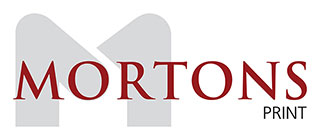THE EDITOR’S CHAIR: ABCs must not distract from great audience growth, says Gary Cullum
WHEN I was a young lad working at the Newspaper Society in the early 1980s I was responsible for the Society’s press and public affairs department – in other words, information. Every department came under a committee of senior NS members, and my chairman was a lovely gent by the name of John Aldridge, then managing director of the Leicester Mercury, a flagship title within the Lord Rothermere-owned Northcliffe Newspapers Group.
The Mercury operated from splendid offices close to the city centre and with a wonderful reception area buzzing with customers and visitors – and had one huge wall completely adorned in old, richly coloured, wooden block poster type of yesteryear. I say yesteryear, but in reality many newspaper offices had small jobbing printers attached to them producing letterheads, business cards, modest sized newsletters and other print work until well into the 1990s.
Anyway, I digress … I was invited by John to attend a Leicester Mercury boardroom lunch to discuss issues of the day with the Mercury directors. What sticks in my mind from that lunch some 35 years ago is that the Mercury’s circulation had just topped 156,000.
Like many other regional evening newspapers it produced a number of editions each day and, at its prime, produced an Asian edition too.
Changing markets
Why do I mention this now? Because in isolation, this month’s release of six-monthly figures (January to June 2019) from the ABC and BPA Worldwide, don’t appear to make good reading. There were notable exceptions: the Carlisle News & Star was down just 0.68 per cent, and the top-selling Irish News down just 4.9 per cent to almost 32,000 copies.
When bulks and free copies are excluded, a number of titles took a big hit losing between 10 and 18 per cent of single copy sales. The Leicester Mercury’s latest circulation figure is 15,460 – a number that starkly reminds us how our markets have changed since that memorable boardroom meeting from days in the 80s when I had a head of thick dark hair and drove a Ford Sierra Sapphire.
Of course, if you are a newsprint, printing plate or ink salesman then you want to know what your target sector is consuming – but that is only part of the story. When you are selling the total reach and penetration of your news brand in your regional, local, or national area of circulation, then we need to add in all clicks, browsers, page turns and web page engagement to our printed newspaper and added value supplement audience. Only then does the story stack up.
When the Leicester Mercury was selling 156,000 copies a day, the newspaper didn’t have any web engagement – because there wasn’t any public use internet. Its only web then was of paper running through its Goss HT60 presses turning in the St George Street premises basement.
Although its newsprint copy sales have shrunk 10 fold in the past 35 years, the total monthly Mercury news brand reach is far, far greater at 722,660 (JICREG 31 May 2019) – that’s a near 83 per cent penetration of the Leicestershire population and much higher in Leicester itself. And this story is not unique to Leicester – all towns and cities with print losses have never before had such large audiences.
Nottingham and Bristol, for example, are also covered by Reach. The Nottingham Post reaches more than 467,000 (JICREG) people each month while the Bristol Post, which sold 10,890 copies a day during the first six months of 2019, reaches out via its overall news brand to more than 938,000 people. Now that’s the full story.





